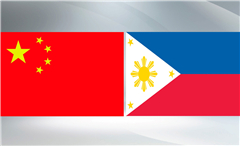China, ASEAN to formulate strategic partnership vision toward 2030
2017-11-13
Xinhua
 Premier Li Keqiang (5th L) and leaders of the Association of Southeast Asian Nations (ASEAN) member countries pose for group photos before the 20th China-ASEAN (10+1) leaders’ meeting in Manila, the Philippines, Nov 13, 2017.[Photo/Xinhua]
Premier Li Keqiang (5th L) and leaders of the Association of Southeast Asian Nations (ASEAN) member countries pose for group photos before the 20th China-ASEAN (10+1) leaders’ meeting in Manila, the Philippines, Nov 13, 2017.[Photo/Xinhua]
MANILA — China proposes the formulation of a vision for strategic partnership between China and the Association of Southeast Asian Nations (ASEAN) toward the year 2030 to upgrade cooperation, Premier Li Keqiang said on Nov 13.
Chairing the 20th China-ASEAN (10+1) leaders’ meeting in Manila with Philippine President Rodrigo Duterte, Premier Li said the vision will upgrade the China-ASEAN cooperation framework from 2+7 to 3+X.
The 3+X, using the letter X in math to represent the unknown, means China-ASEAN will touch many fields while focusing on three pillars — political security, economy and trade, and people-to-people exchange.
The current 2+7 framework emphasizes a two-point political consensus of enhancing strategic trust and promoting economic cooperation and seven cooperation fields including trade facilitation, interconnectivity, security exchanges, among others.
Premier Li said China-ASEAN cooperation will have more global substance and build a new exemplar for South-South cooperation.
The Premier said it is a consensus of the ASEAN nations that China-ASEAN relationship is the most vibrant and has the richest contents among the relationships ASEAN has with its partners. China was the first major country outside the bloc to endorse the Treaty of Amity and Cooperation in Southeast Asia, to form a strategic partnership with ASEAN, and to start free trade area talks with it.
Premier Li said China has, as always, given priority to its relations with ASEAN in neighborhood diplomacy and is committed to being ASEAN’s good friend and good neighbor who can work together to tide over difficult times and strive for a community of shared future with common ideals, prosperity and responsibility.
On Nov 13, he proposed the alignment of the Belt and Road Initiative with the Master Plan on ASEAN Connectivity 2025 to deepen China-ASEAN cooperation in such areas as trade, finance, infrastructure, rules and regulations, and personnel.
Premier Li said China and ASEAN should conduct closer high-level exchanges, strengthen policy dialogue, deepen political security cooperation to advance mutual understanding and trust.
He urged all ASEAN nations to ratify the upgraded China-ASEAN free trade area (FTA) agreement as soon as possible so as to bring benefits to both sides at an early date.
Advances should be made in Regional Comprehensive Economic Partnership (RCEP) negotiations, implementation of key international industrial capacity cooperation projects, financial cooperation between China and ASEAN, he added.
On people-to-people exchanges, Premier Li said China will provide government scholarships to more than 20,000 ASEAN students in the next three years. China will offer training courses to 3,000 candidates from ASEAN in 2018 and boost cooperation in capacity building in such areas as finance, agriculture, science and technology, culture, public administration and transportation.
Premier Li said China agrees to designate the year of 2018 as the China-ASEAN Year of Innovation and will, in the coming five years, invite 500 young ASEAN scientists to China for short-term scientific research projects, train 1,200 ASEAN scientific research and management personnel and launch 10 joint research labs.
Premier Li also said China has also proposed the leaders’ meeting to announce the start of consultations on the text of the Code of Conduct (COC) in the South China Sea.
Citing government sources, Philippine local television network ABS-CBN reported on late Nov 13 that ASEAN leaders have also agreed to begin negotiating the text.
ASEAN leaders said the positive response shows that the South China Sea situation is stabilizing and there is a consensus between China and ASEAN to safeguard regional peace and stability.



